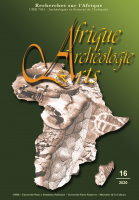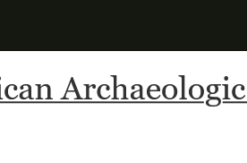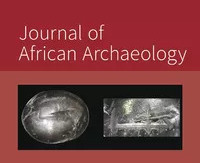C. Magnavita/T. Bouimon, Archaeological research at Tié (Kanem, Chad): excavations on Mound 1 / Recherches archéologiques à Tié (Kanem, Tchad) : fouilles du monticule 1, in: Afrique : Archéologie & Arts 16, 2020, 77-96.
Full Text (en)
Abstract (source: Open Edition Journals):
In contrast to research on its history, archaeological investigations in the Chadian region of Kanem has just started very recently. Presently, the most conspicuous material vestiges known are the ruins of fired-brick elite locations, some of which are demonstrably associated with the Kanem-Borno Sultanate and dated to the period 11th-14th centuries AD. Amongst those, the place named Tié stands out due to a number of particular attributes. Consisting of a fired-brick enclosure of about 3.2 hectares, the location not only occupies the central position within a compact cluster of eleven smaller sites in central Kanem. It is apparently also the largest known site purely constructed with fired bricks. In addition, the place exhibits some settlement-related features not visible at any of the other sites thus far surveyed by the authors. Such a feature is Mound 1, the southern of two large debris mounds in the northeast sector of the site. Recent archaeological excavations reveal that Mound 1 conceals the remains of a massive multi-roomed and relatively well-preserved fired-brick building with plastered interior walls. The structure was erected at latest sometime between the mid-12th to mid-13th centuries and was still in use in the early 14th to early 15th centuries. Whilst its function remains unclear and open to interpretation, the discovery supports the allegedly distinctive status of Tié in relation to other fired-brick elite sites in the region.





